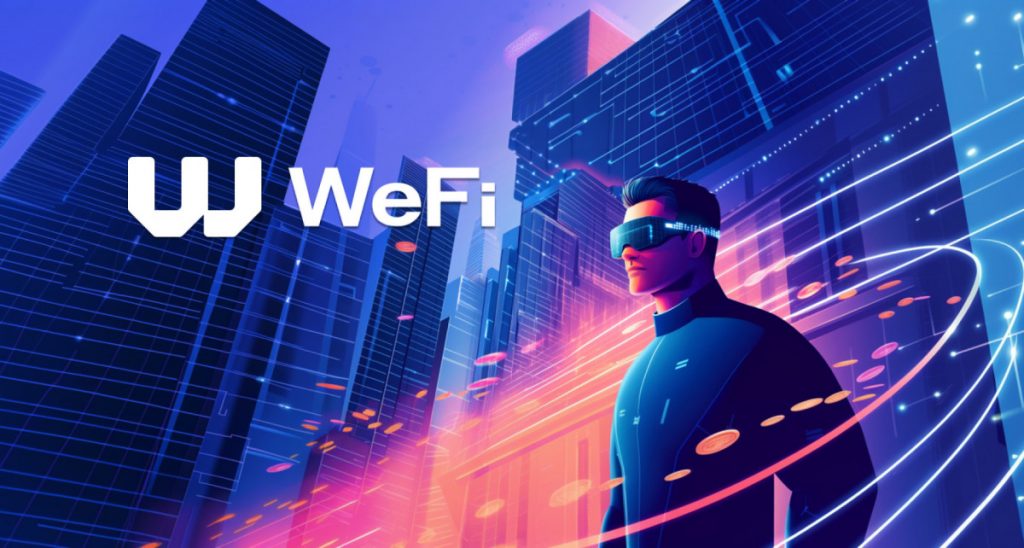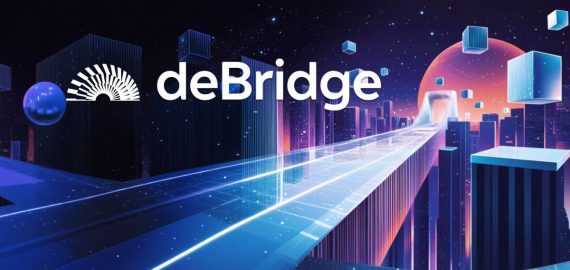Rebuilding Banking On-Chain: Maksym Sakharov On How WeFi Combines DeFi Innovation With Financial Services


In Brief
WeFi is redefining banking by combining DeFi innovation with programmable accounts to make assets more productive, transparent, and efficient while complementing traditional financial systems.

Since its inception, decentralized on-chain bank WeFi has been addressing a central question: can cryptocurrency banking evolve into standard banking?
The platform has long emphasized that neobanks, while offering modern mobile experiences, still depend on traditional banking infrastructure. This reliance often results in fees, processing delays, and regulatory limitations carried over from conventional systems.
WeFi’s approach diverges from this model by operating entirely on blockchain networks. It provides non-custodial accounts, stablecoin-based yield opportunities, payment cards for daily transactions, and access to ATM withdrawals. In the words of WeFi’s co-founder Maksym Sakharov, “We’re not patching the system. We’re rebuilding it on-chain.”
In a conversation with Mpost, Maksym Sakharov explained how deobanks like WeFi, along with decentralized finance (DeFi), are reshaping conventional financial systems through asset composability, transparency, and automation.
According to Maksym Sakharov, the true power of DeFi lies in its flexibility, allowing a single asset to be used in multiple ways simultaneously.
“For example, in a deobank, your tokenized ETH is not just locked in; it generates yield in real time, serves as a credit collateral for loans, and provides liquidity for payments—all at the same time,” said Maksym Sakharov to Mpost. “This is very different compared to traditional finance, where such tasks are spread out in different accounts, often followed by complex procedures and hidden fees,” he added.
Transparency also plays a transformative role. Users no longer have to rely on limited quarterly statements or unclear reports when managing on-chain assets. Instead, they can verify and audit their holdings instantly. The Bank of International Settlements has pointed to a lack of trust in finance—an issue that deobanks directly address. Rather than requiring users to rely on trust, deobanks allow them to see everything openly.
Users are increasingly shifting from passive crypto wallets to active, programmable accounts, but the underlying motivations behind this move are still being explored. Maksym Sakharov explained, “Think of a passive wallet as a vault—it’s secure but inert. This worked in crypto’s infancy when simply holding custody was paramount. But today’s users ask an important question: why should my money sit still?”
WeFi’s founder believes that programmable accounts address this challenge by automating yield strategies, managing collateral, and scheduling payments without requiring users to be traders or coders. This automation, he noted, helps democratize financial activity, enabling assets to generate value with minimal effort.
Beyond security, users increasingly seek productivity from their assets without dealing with complex procedures. Programmable accounts achieve this through automation and user-friendly design, handling yield optimization, collateral utilization, and payment scheduling seamlessly in the background.
This evolution represents a broader shift in finance toward autonomy and efficiency. As Sakharov emphasized, those who adopt programmable accounts see their assets working for them, reflecting a growing trend of financial empowerment.
Deobanks And Traditional Banks to Coexist: Maksym Sakharov Predicts A Hybrid Financial Future
However, Maksym Sakharov does not foresee DeFi and deobanks replacing traditional banks within the next 5 to 10 years. “I don’t see DeFi or deobanks completely replacing traditional banks because regulations, compliance, and trust mechanisms are strongly built into the system. Instead, the future promises hybrid adoption,” he said to Mpost.
He believes that in the next decade, deobanks will develop as a complement to the existing banking system. During this period, users may retain traditional accounts for regulatory purposes while channeling financial activities through deobanks. Over time, as regulators become more familiar and efficiency gaps narrow, traditional institutions will need to adopt these new technologies or partner with deobanking infrastructure.
“The International Monetary Fund recently addressed how tokenization has the capacity to transform cross-border payments and capital markets. Deobanks extend this approach to regular users. If traditional banks were created to protect money, then deobanks are designed to activate it,” Maksym Sakharov said. “Ten years from now, I don’t see a ‘banks vs. deobanks’ case or a one-sided win narrative, but rather a mixed ecosystem where new deobanks and traditional banking platforms co-exist,” he noted.
The question remains: why shouldn’t asset efficiency stop at perpetuals?
The expert noted that perpetual decentralized exchanges (DEXs) have set new standards for capital efficiency, particularly through yield-bearing asset security such as stETH. However, this concept is largely applied within trading and remains mostly limited to the business sector.
“In traditional banking, users’ funds are largely held in wallets or accounts without actively doing anything, and this is a major opportunity unused. The theory that makes perpetuals effective should be extended beyond trading. These strategies can also be used to maximize savings, payments, and credit history. It is about redesigning the entire financial structure with more focus on productivity, rather than just trading,” he said.
Deobanks merge DeFi architecture with banking utility, but the purpose is not to reinvent banking, rather to restructure it. Deobanks combine DeFi features, such as smart contracts, interoperability, and on-chain transparency, with essential financial services including fiat integration, payments, savings, and credit.
While traditional fintech may incorporate cryptocurrency as a layer, often under custodial frameworks, deobanks take a different approach by building directly on DeFi rails and then integrating conventional banking features. Accounts become programmable smart contract wallets that are auditable and directly connected to daily financial transactions. This setup provides access to standard financial services while increasing productivity and reducing reliance on intermediaries, the expert concluded.
Disclaimer
In line with the Trust Project guidelines, please note that the information provided on this page is not intended to be and should not be interpreted as legal, tax, investment, financial, or any other form of advice. It is important to only invest what you can afford to lose and to seek independent financial advice if you have any doubts. For further information, we suggest referring to the terms and conditions as well as the help and support pages provided by the issuer or advertiser. MetaversePost is committed to accurate, unbiased reporting, but market conditions are subject to change without notice.
About The Author
Alisa, a dedicated journalist at the MPost, specializes in cryptocurrency, zero-knowledge proofs, investments, and the expansive realm of Web3. With a keen eye for emerging trends and technologies, she delivers comprehensive coverage to inform and engage readers in the ever-evolving landscape of digital finance.
More articles

Alisa, a dedicated journalist at the MPost, specializes in cryptocurrency, zero-knowledge proofs, investments, and the expansive realm of Web3. With a keen eye for emerging trends and technologies, she delivers comprehensive coverage to inform and engage readers in the ever-evolving landscape of digital finance.


















































